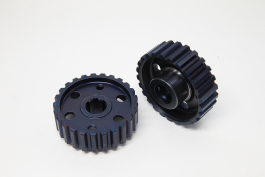SteveA
VIP MEMBER
- Joined
- Dec 20, 2011
- Messages
- 3,334
I have a TTi box and a Norman White belt drive and clutch. The clutch centre is a modified Commando item that Norman uses, the mods relate purely to the location on the gearbox shaft. Everything else is different to Commando, but enough is similar that similar issues are possible.
As it gets hotter, read after maybe 4 laps of Carole which short but has 2 hairpins.....so the clutch gets some abuse.....and even hotter if you have to slip it in second out of the hairpins.
It gets progressively more difficult to select first gear, which is a bugger because you need it twice. Though it's possible the issue is affecting all down gear changes, it doesn't become an unmanageable problem until it can drop in to neutral instead of first, where it stays.
The last time I stripped it, I did note some notching on the clutch centre. Lots of other things in life got in the way, like health, so here we are at least a couple of years later, possibly 'rediscovering' the issue.
Has anyone had similar symptoms?
What did you trace them to?
As it gets hotter, read after maybe 4 laps of Carole which short but has 2 hairpins.....so the clutch gets some abuse.....and even hotter if you have to slip it in second out of the hairpins.
It gets progressively more difficult to select first gear, which is a bugger because you need it twice. Though it's possible the issue is affecting all down gear changes, it doesn't become an unmanageable problem until it can drop in to neutral instead of first, where it stays.
The last time I stripped it, I did note some notching on the clutch centre. Lots of other things in life got in the way, like health, so here we are at least a couple of years later, possibly 'rediscovering' the issue.
Has anyone had similar symptoms?
What did you trace them to?

